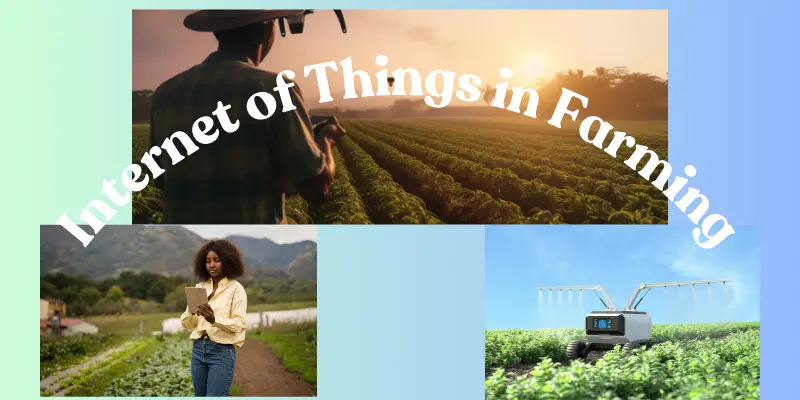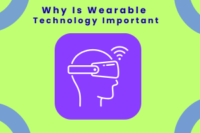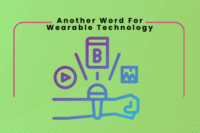Internet of Things Smart Farming – Real World Impact
Published: 04 Apr 2025
Introduction
Farming is changing—and fast. The Internet of Things smart farming is leading that change. It’s all about using smart devices, sensors, and data to make farming easier and more efficient. Imagine a farm that tells you when to water crops or where pests are hiding. That’s what IoT does!

How IoT Works in Smart Farming
The Internet of Things in smart farming uses sensors placed in the soil, water systems, and equipment. These sensors keep an eye on things like how wet the soil is, how hot or cold it gets, and what the weather’s doing. This information is sent to farmers through apps or dashboards. So, instead of guessing, farmers can make smart choices based on real-time data.
Key Applications of Internet of Things Smart Farming
IoT is helping in many ways on the farm:
- Precision Farming – Planting seeds at the right spot and using the right amount of water or fertilizer.
- Livestock Monitoring – Wearable sensors on animals to track their health.
- Smart Irrigation – Systems that turn on water only when the soil is dry.
- Pest Detection – Sensors that alert when pests are near crops.
The applicability of Internet of Things in smart farming is wide and growing every day.
Technologies Used in Smart Farming
Several smart tools are used in IoT farming, such as:
- Soil Moisture Sensors – They show if the soil is dry or moist.
- Drones – Monitor crop health and spread seeds or sprays.
- GPS-enabled Tractors – Help in planting and harvesting.
- Weather Stations – Give local, accurate weather updates for the farm.
Even an Internet of Things technician smart agriculture expert can set up and maintain these devices on large farms.
Benefits of Internet of Things in Smart Farming
Using Internet of Things smart farming brings many advantages:
- Saves time and effort for farmers.
- Reduces water and fertilizer waste.
- Boosts crop quality and quantity.
- Cuts down costs by using resources better.

Smart Farming in Pakistan
In Pakistan, smart farming is slowly growing. Farmers in areas like Punjab are starting to use smart irrigation and weather tools. The government and startups are working together to bring Internet of Things in smart farming to more fields.
Smart Farming at Home
Even small-scale gardeners can benefit. With home-based smart systems, you can:
- Water plants automatically.
- Get alerts when soil needs care.
- Track weather conditions.
This is great for urban farming and rooftop gardens.
Challenges of IoT in Farming
Smart farming isn’t perfect. Here are a few issues:
- High cost of devices and setup.
- Poor internet connectivity in rural areas.
- Lack of trained Internet of Things technician smart agriculture experts.
- Farmers may need training to use new tools properly.
Example of Smart Farming
A great example is a tomato farm that uses soil sensors and automatic irrigation. When the soil gets dry, water flows without any manual work. This kind of Internet of Things smart farming saves water and grows better tomatoes.
Future of IoT in Agriculture
The future looks bright. More farmers will adopt IoT tools as prices drop. Governments may provide support and training. Also, the role of Internet of Things technician smart agriculture will grow as farms go fully digital.
Conclusion
Internet of Things smart farming is the future of agriculture. It helps grow more food with less effort. From big farms to small gardens, smart technology is making farming smarter, cleaner, and more efficient. The applicability of Internet of Things in smart farming is real and growing—and now’s the best time to learn and grow with it.
You can get more information about Internet of Things smart farming by visiting this detailed guide.
FAQs
IoT in agriculture means using smart devices like sensors and GPS tools to collect data on farms. This helps farmers make better decisions and improve crop growth.
Internet of things smart farming technology uses tools like sensors, drones, and apps to manage farms more efficiently. It helps save time, reduce waste, and grow better crops.
The Internet of Things in agriculture connects farm tools to the internet so they can share data. This makes farming easier by giving real-time updates on soil, weather, and crops.

- Be Respectful
- Stay Relevant
- Stay Positive
- True Feedback
- Encourage Discussion
- Avoid Spamming
- No Fake News
- Don't Copy-Paste
- No Personal Attacks

- Be Respectful
- Stay Relevant
- Stay Positive
- True Feedback
- Encourage Discussion
- Avoid Spamming
- No Fake News
- Don't Copy-Paste
- No Personal Attacks



